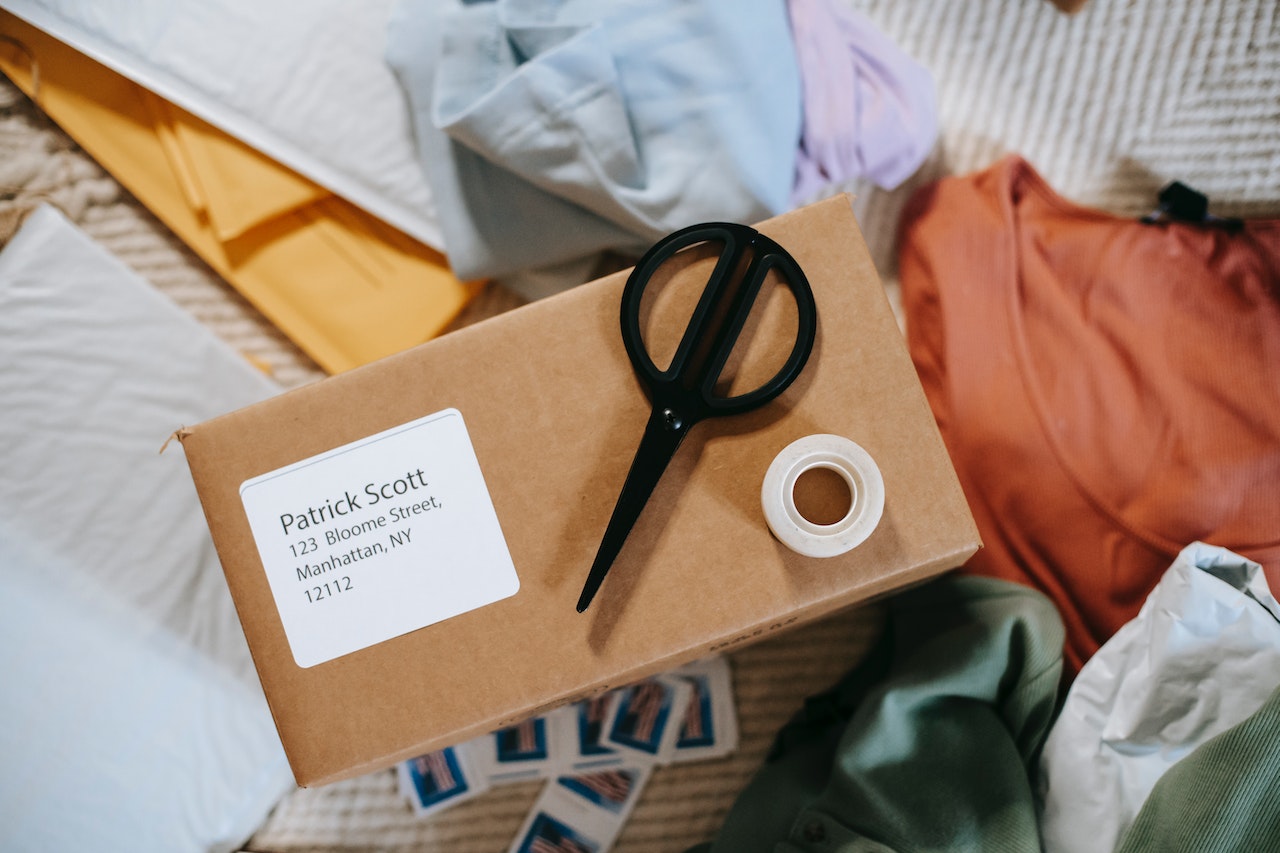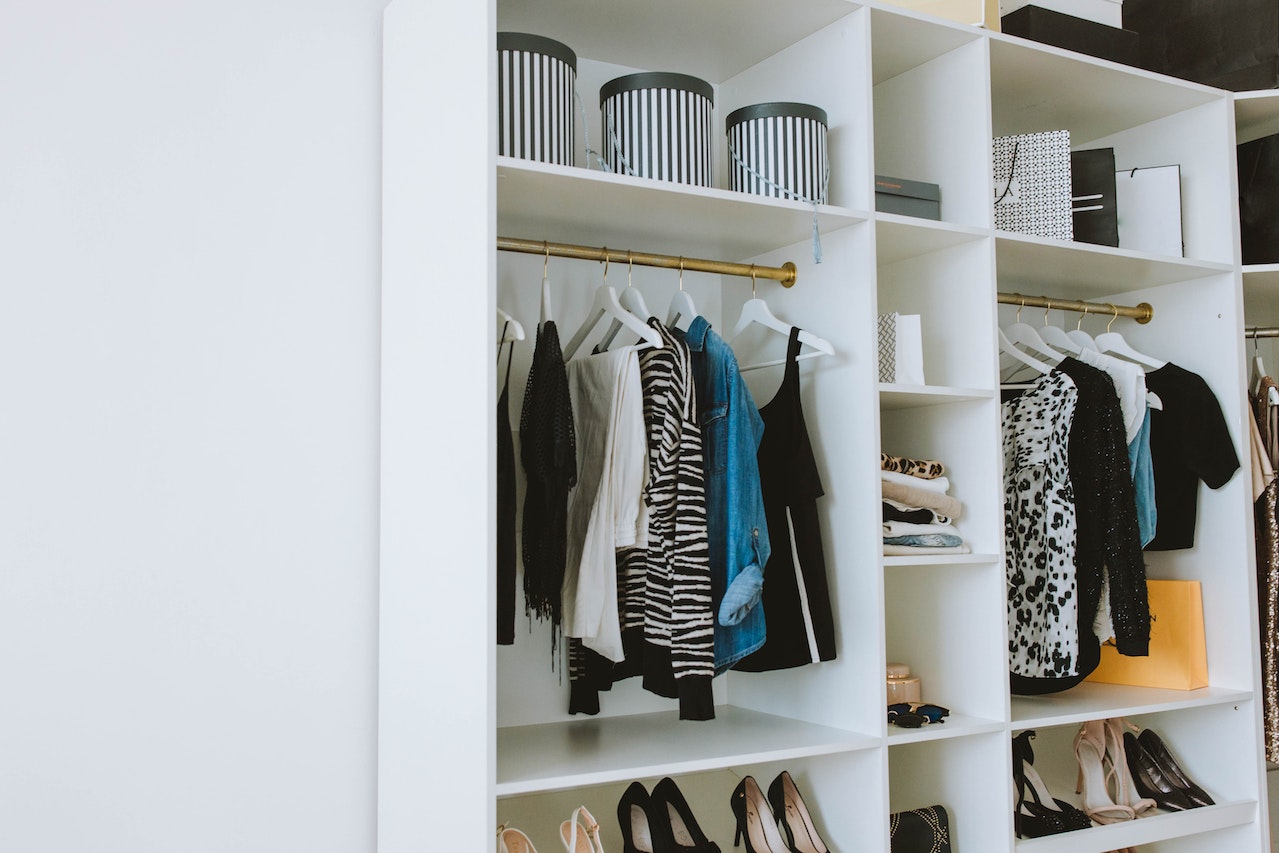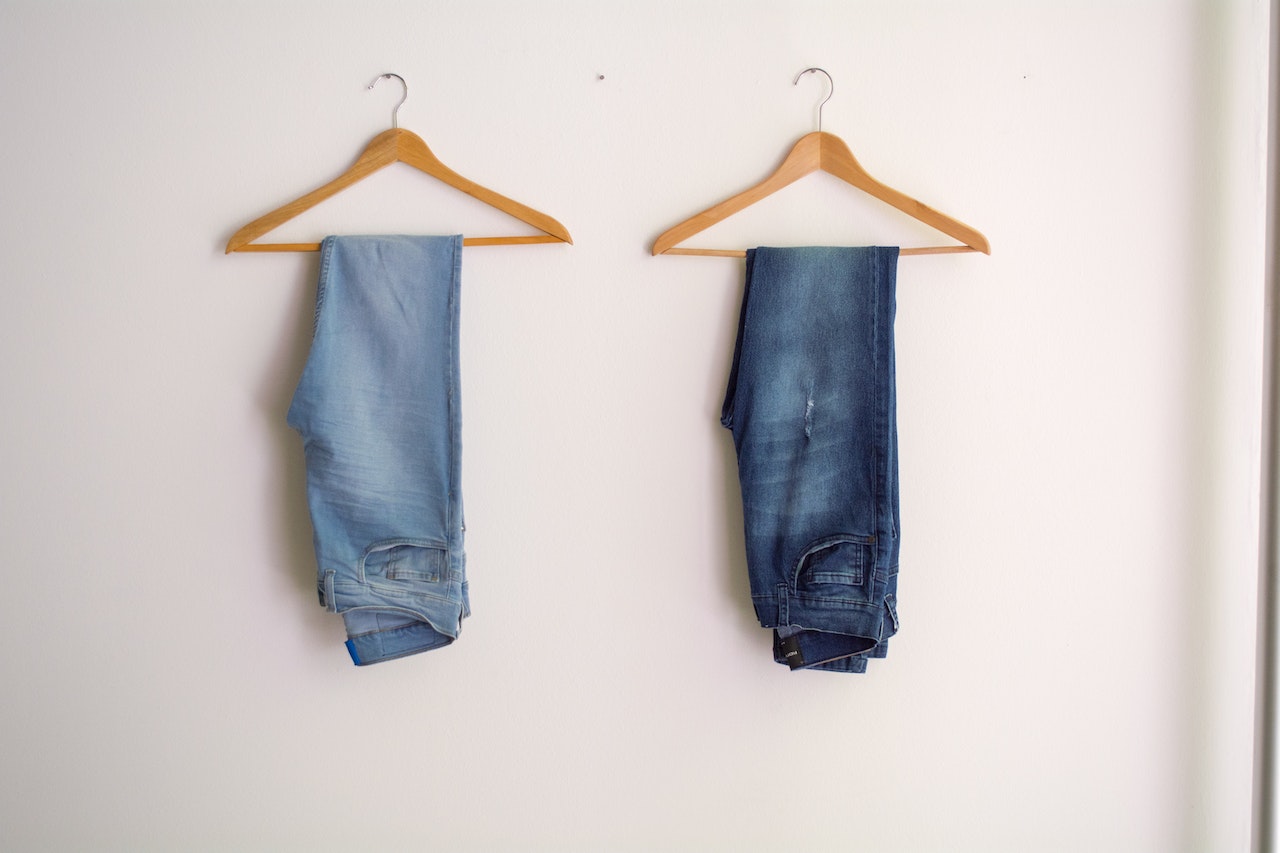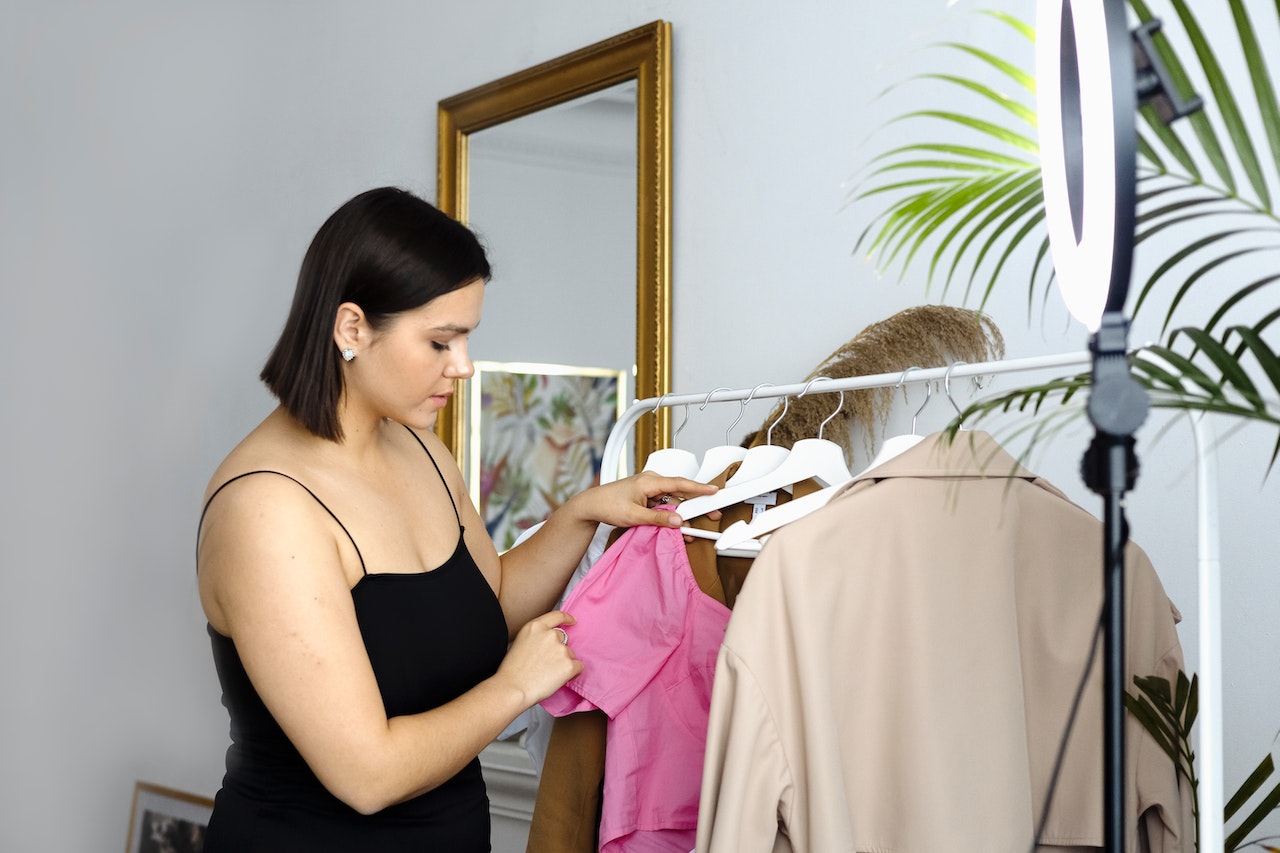The online clothing retail business is booming, from designer denim and handbags to vintage graphic tees. It has an estimated value of over $670 billion by 2023. The industry continues to grow, and now it’s easier than ever for the average person to sell their clothing online rather than in a physical store. Not only does this save you money, but it’s also much more sustainable by keeping excess waste out of a landfill. If you’re planning to sell your clothes online, having a designated space will help you stay organized for easy sales. This guide has tips to help you set up your area to sell clothing online.
Table of Contents
The benefits of selling your clothes online
The benefits of selling your clothes online
There are plenty of excellent benefits to selling your used clothing online.
Money
You may not make a fortune selling your dress online, but it’s still a great side hustle. You’ll get at least a portion of the money you already spent on the clothes. Some pieces could even garner you more money than you expect. Some rare, vintage, or designer clothing items often bring in more cash than typical, mass-produced items.
Environmentally friendly
If you’re looking for ways to help the environment, selling your second-hand clothing is a great way to do it. You’re giving your clothing a second chance at a new life and keeping it from heading to a landfill. Many people love to buy second-hand clothing because they find unusual pieces or save money instead of buying the same item brand-new.
It helps you declutter
If you feel like you’re drowning in too many clothes, shoes, and accessories, why not sell some of your things online? Not only will you make some extra cash, but you’ll also declutter your closet. Go through your drawers and look for pieces you never wear. It’s a fantastic opportunity to bring in some money while organizing your home.
Easy and low-cost
Selling your used clothes is easy once you find a few different platforms to sell them. Not only is it simple, but it’s also a low-cost way to run a small business. Most major selling apps like eBay, Poshmark, and others take their fees (including the shipping cost) from the final price, which means you won’t have to pay anything out of pocket.

How to start
It’s easy to get started selling your clothes online with these quick tips.
Declutter
Take any clothes, shoes, and other accessories out of your closet that you don’t wear anymore. That’s how you get your first batch of inventory when you sell items online.
Check the condition
Verify that everything you plan to sell is in good condition. Your used clothing doesn’t have to be 100% perfect and can have some minor flaws. Remember that damaged items will have less value than those in good or excellent condition. Luxury brands will always be more valuable than other everyday clothes.
Categorize
Categorize your items based on different types like sweaters, t-shirts, dresses, skirts, jeans, etc. You can also categorize them seasonally. For example, heavy coats and sweaters should be stored away from lightweight tops and bathing suits.
Do market research
Look up other items that are similar to what you have and see what the online prices are. This is the best way to ensure that your items will sell and that you’re pricing them competitively.
Estimate shipping costs
Most selling apps and platforms have set rates for shipping. Your total shipping costs will depend on the platforms you use. Remember to adjust each item’s shipping cost based on the weight, as boots will cost more than leggings, for example.
Prep your clothes
Make sure everything is clean and ready to sell before you list them. If certain items are dry clean only, include this in your listing.
Take good photographs
Quality product photography will help your items sell faster. You don’t need to take professional photos, but take them in natural light, use a model, or get clear closeup images to show product details. Photograph items in front of a plain background so they’re easy for buyers to see.
Write a good description
Take some time to write thorough, detailed product descriptions. The words you choose will help buyers know what they’re getting and could also promote a sale. Be as straightforward as possible so people know what they are purchasing.
Track the inventory
Keep track of your inventory with a spreadsheet, or write everything down in a notebook. You can also separate items and label them in bins so that everything is easy to find when something sells.

Setting up the space
You’ll need proper clothing storage and a dedicated space at home to start this side hustle. Ensure that everything is organized and together in one place. If you need help, a professional home organizer can help you set everything up.
Use a clothing rack or shelves
Once you know what you plan to sell, hang the items on a separate rack so they don’t accidentally end up in your closet. Hanging your clothes will also keep them wrinkle-free and protected from damage. If you don’t have enough closet space for all your pieces, you can add a drawer cabinet or drawer cart, which you can label in categories to keep it organized, it’s important that you only use it for clothing that isn’t easy to wrinkle or to store accessories or shoes. Always store your clothing so it’s ready to be mailed once it sells.
Designate a photography spot
Pick an area of your home for your product photography. It doesn’t need to be a professional studio, but it should at least be well-lit with a good background. You can easily DIY your photos at home without hiring a professional photographer. You can create a cyclorama to make your photos look more professional or if you don’t have the ideal background. A white cardboard or even a white piece of cotton fabric can work. If possible, take pictures of the clothes worn by a model. The model can be yourself or someone you know – as long as the photographs showcase how the item looks when a real person wears it. Another option is to buy a lightbox. This is great for shoes and accessories photography.
Add storage
Have a place in your home where you store your boxes, shipping labels, tissue, and bubble wrap. If you don’t have enough space, you can create shelves by using pretty and functional baskets with the packages that are ready to go. Don’t forget to include a nice thank-you note, dress your package up with ribbons, or even add a perfume spray for a pleasant customer experience.
Create a system to stay organized
You can organize your clothing by brand, size, type, or price as long as the system works for you. When you have a plan, it’s much easier to find what you need quickly. Create an area for the packages that need to be shipped, those that need to be labeled, and those that are pending sale.

Where to sell clothes online
There are plenty of excellent online marketplaces where you can sell your clothes and accessories.
Apps
These apps make it a cinch to sell your clothes online:
- Poshmark: This app is one of the most popular ones for reselling clothes, and you can share your posts, join Poshmark parties, and make offers to buyers.
- Mercari: You can sell anything on Mercari, including clothes and shoes. It’s one of the most accessible and popular resale apps available today.
- Tradesy: Most items on this app are from luxury brands, but you can usually list items at a higher price for better profits.
- Depop: This hip resale app is available worldwide and focuses on vintage, unique, trendy clothing and other items.
- The RealReal: This app is ideal if you want to sell high-end items. The company uses a team to authenticate luxury items for a successful sale.
Social media
You can also sell your clothing via social media. This can be one of the easiest ways to sell your clothes, as you are probably familiar with these platforms. It’s a good way to promote your pieces with your friends and family and a great way to avoid paying commissions, the money you earn is 100% yours.
There are several ways to sell on Facebook, including:
- Marketplace: Facebook Marketplace allows you to sell your items to people near you or via postal mail.
- Groups: Join a few clothes-centric groups on Facebook where people buy and sell used clothing.
- Stories, etc.: You can also post what you have for sale via your Facebook stories or as a post on your profile wall.
This fashion-forward social media app is great for small businesses. You can create a separate account just for your clothing resale business. Use stories and short videos to advertise what you have to sell. A video of yourself modeling or talking about the clothing is a great way to garner customer interest.
Ecommerce platforms
Many e-commerce platforms are also available, and they make it easy to sell your clothes online.
- eBay: This popular auction website is ideal for resale. You can list your items as an auction to see how high the bids go or list them as “buy now” and name your price. The option for customers to make offers is also available for faster sales.
- Etsy: Although this website (and app) focuses on homemade clothing, there’s also a profitable market here for vintage clothing sales. Etsy is another excellent e-commerce platform to use if you have many unique clothing pieces.
- ThredUp: Known as the most prominent “online thrift store,” ThredUp lets you ship your used clothing directly to them via UPS on consignment. While you won’t sell the clothes directly, it’s a much easier way to declutter your closet while making some extra cash at the same time.
You can create a designated space to help you sell your clothes online with the proper setup and organization. When everything is organized, you’ll have an effective system that allows you to make extra cash while living a more sustainable lifestyle. Remember the tips from this guide, and make sure you take great photos of your clothing before you list them. Using the right apps, social media platforms, and e-commerce websites to market your clothes and accessories will ensure a successful side hustle.




